Bhayander's Shailesh Goyal switched from car to AC local to get to work. The upside: he saves 2.5 hrs one way. There are 4 lakh more like him. Infra gurus wrap their heads around the city's unique commute conundrum
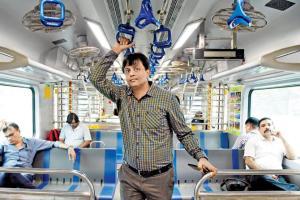
Pic/Nimesh Dave
If global studies, recent statistics and local case studies are any indication, Mumbai is seeing a major commuting crowd-shift. You would've thought that crowded stations and packed compartments would put off the car-affording Mumbaikar, but it's quite the opposite. Because road traffic often means twice the time taken on trains, many have made the switch back to the good old local.
As per the Amsterdam-based TomTom Traffic Index—a report detailing the traffic situation in 403 cities across 56 countries, released last month—Mumbai is the most congested city in the world. The report states that road users here spend an average of 65 per cent extra time stuck in traffic. The other four in the global rankings are the Colombian capital, Bogota (63%), Lima in Peru (58%), New Delhi (58%) and Russian capital, Moscow (56%).
The researchers have ratified this with hi-end technology and satellite navigation tools. "Globally, traffic congestion is rising. And that's both, good and bad news. It's good because it indicates a strong global economy, but the flip side is that drivers are wasting time sitting in traffic, not to mention the huge environmental impact," Ralf-Peter Schäfer, vice-president of Traffic Information, told mid-day.
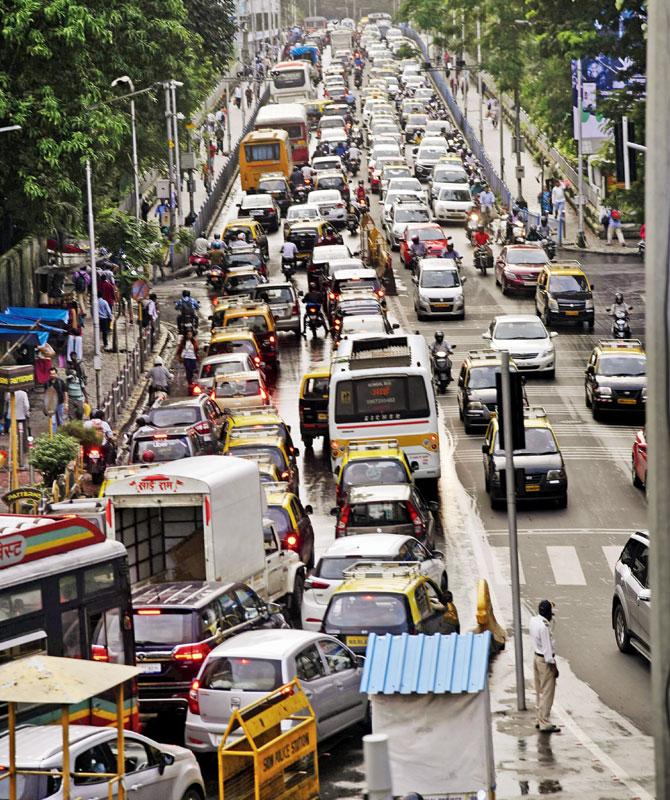
A traffic jam at Dadar TT Flyover on July 11. Pic/Pradeep Dhivar
With most of Mumbai roads—major and arterial—currently dug up either for construction of the Metro, or a new flyover, barricading has been slowing down traffic. The monsoon has brought with it the pothole menace, adding to travel time. Despite the crowds, the local then remains the fastest and cheapest way to get around the city.
Back to the local
"Earlier, I would take the road, preferring the share-a-cab. But now, with increasing traffic jams, it gets difficult to reach work on time. Besides the Metro work, there are too many private cabs on the roads," says Shailesh Goyal, a businessman from Bhayander West. When Goyal, 46, first began commuting to get to his work place in Abdul Rahman Street, he would take two-and-a-half hours on the road. "The last five years have seen the commute stretch to four hours one way. I leave my south Mumbai office at 7.30 pm to reach Bhayander by 11 pm."
Last year, he made the switch to AC local, which provides him a comfortable ride. "I need to head to South Mumbai weekly, and the train gets me home in an hour." He adds that train journeys have also proven to be economical. "I realise that by taking the train, I save so much of my working time, especially during the evening rush hour. The AC local has cut down my travel stress," says Goyal, who is now a member of the Zonal Railway Users Association, a position he hopes will help him take up issues faced by fellow commuters.
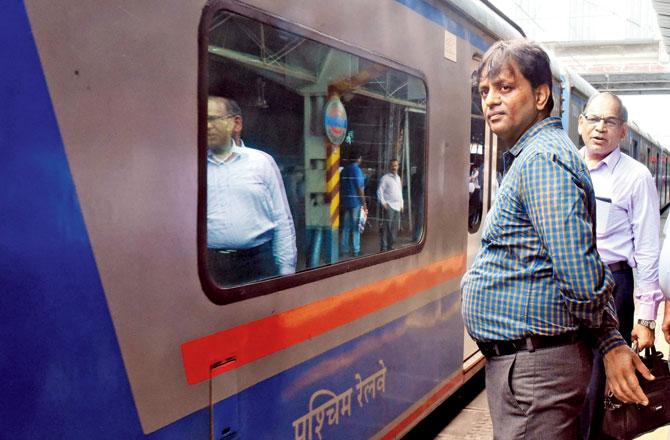
Till five years ago, Shailesh Goyal would take two-and-a-half hours to travel from Bhayander West to Marine Lines. Today, with the commute having extended to four hours one way, he has switched to the AC local, which he says saved him both time and stress. Pic/Nimesh Dave
While work on the BKC connector is slowing down traffic in the Chunabhatti-Sion stretch of the Eastern Express Highway with the narrow Amar Mahal Junction and Metro 4 work (Wadala-Thane) near Ghatkopar causing further blocks, on the Western Express Highway, work on Line 7 (Dahisar-Andheri) and Line 3 (Colaba-Seepz Underground) of the Metro is on. Work for both Metro Line 4 (Wadala-Thane) and Line 2 on the Link Road is on at LBS Road in the eastern suburbs. BKC has also been dug up for Line 2, with work on the Kalanagar bridge conducted simultaneously.
The pinch on the road, felt since construction on various infrastructure projects began in 2014, is affecting not just the common man, but political representatives too.
Shiv Sena MLA from Magathane, Borivli, Prakash Surve was spotted taking a local from Borivli to Bandra earlier this week at 11.45 am, along with his security personnel and secretary in tow. He makes the commute each time he has to reach the Mumbai suburban collector's office in Bandra East.
The switch, which he made two years ago, he says, saves him 75 minutes each way. "Taking the road meant spending two hours. By train, it takes less than 45 minutes and I can give that extra time to the people of my constituency. I suggest that those who can, should take the train. It will lessen the burden on the roads."
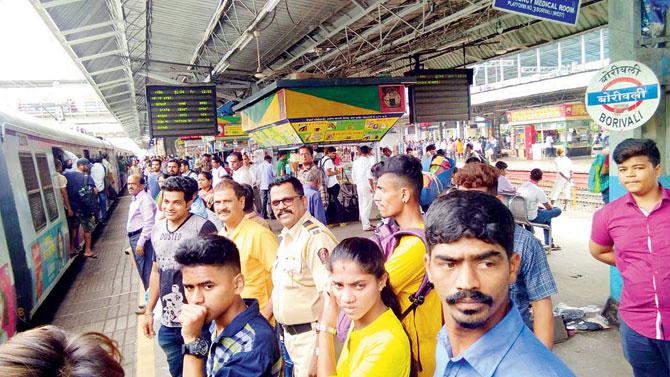
Shiv Sena MLA from Borivli Prakash Surve (in yellow shirt), takes the train to Bandra along with his secretary and security personnel as it cuts his commute by 75 minutes
The lifeline's burden
The switch, however, is an added burden on the local railways system, which is struggling to expand its services in proportion to the city's population. Railway statistics reveal that the crowds at stations are surging. On Central Railway, for example, the total number of services in 2015-16 were 1,660, which rose steadily to 1,774 in 2019-20, a rise in 114 services. The number of passengers increased from 40 lakh in 2015-16 to over 44 lakh in 2018-19, keeping the crowd levels same. On the Western Railway, the number of daily services saw a jump from 1,319 in 2015 to 1,367 in 2019. Yet, a passenger count growth of a lakh—from 34.34 lakh in 2015 to 35.88 lakh in 2019—meant little relief.
Also Read: Mumbai Rains: Despite less showers than last week, complete mayhem in city
"There is about 200 km of Metro work currently on in Mumbai, leading to digging up of most arterial roads. This has resulted in an overall slowdown of traffic and, unlike earlier, not many people are taking app-based cabs. The BEST has proved to be a big failure and the crowd that would earlier take the road has now temporarily shifted to trains. Let's hope that the BEST fare cut brings back some passengers on to the road," says Ajit Shenoy, transport expert with Mumbai Mobility Forum.
Offering solutions
Western Railway's Chief Public Relations officer Ravinder Bhakar, says, "The Mumbai suburban network is maintained at the highest standards. The accuracy maintained is in millimetres. This is the reason 3,000 plus suburban services are run by Western and Central Railway on a network of a few hundred kilometres." In the last 10 years, emphasis has been laid on increasing services by improving punctuality and upgrading infrastructure. "The Railways has systematically identified specific areas for improvement and within the available resources and operational limitations, carried out works that resulted in 41% increase in carrying capacity in last 10 years. There are short-term plans, long term plans and plans in co-ordination with other agencies. The full-fledged Metro network, though still in construction stage, will serve as an alternate mode of transport and shoulder the load of saturated suburban network."
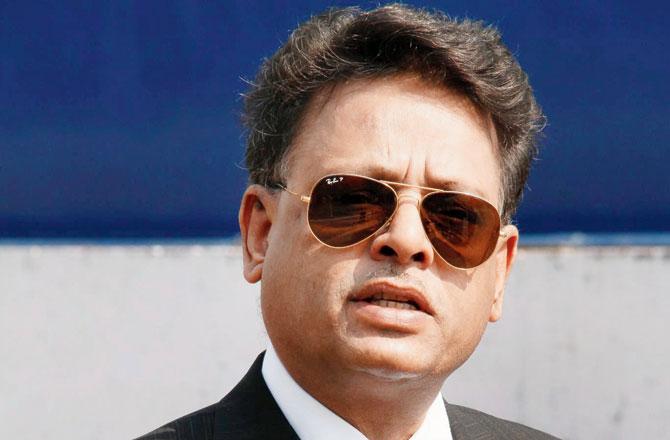
Subodh Jain
Central Railway's Chief Public Relations officer, Sunil Udasi feels that segregating suburban and passenger/mail express trains is the key to reducing passenger congestion at stations. "The Mumbai Urban Transport Project will decongest the load on the Railways as it envisages adding more lines next to existing ones, additional trains and corridors. This will give a boost to the saturated network." Jitendra Gupta, member of Mumbai Transport Forum, says, it's not possible to bank on the railways alone. "We need to seriously look at alternatives. The Metro lines will be able to help in some way, but there is also a strong need for a road network linking Mumbai to the outskirts, Dombivli and Virar-Vasai, from where crowds pour in for daily jobs."
Shenoy agrees that the suburban network has served the best it could. "The Communication Based Train Control (CBTC), which by signalling directly to the motorman's cabin will allow for greater train speed and therefore, improved frequency, and increasing train length to 15-car are the only measures that the Railways could take. But this helps in a limited way. It is now time for the state government to step in and create employment opportunities on the periphery of Mumbai in what is called the Mumbai Metropolitan Region." Former railway board member (engineering) and ex-Central Railway General Manager Subodh Jain, however, differs.
Also Read: Mumbai parking policy: BMC did not use its head to tow, allege activists
He says, "First we talk of a viable alternative. The Comprehensive Traffic Survey (CTS) conducted in the 1990s suggested the Metro system network to aid in negative growth of suburban traffic. But this is not happening. In any case, the Metro system can only supplement the suburban system. It is not an alternative. You cannot expect the person commuting from Virar to Churchgate, in the Metro, to pay R150 each way." Jain says the only way to maximize the capacity of the Mumbai suburban network, apart from 15-car trains, is to create a fifth and sixth line for long-distance traffic alone.
200km
The stretch of road network in Mumbai covered by Metro construction
No. 1
Slot Mumbai occupies in TomTom Traffic Index survey of 403 cities as most congested city in the world
65%
Extra time that Mumbai's road users spend stuck in traffic acc to Traffic Index
What you should know about the Railways
Western Railway's Mumbai suburban trains cover the distance equivalent from Earth to moon, 3.84 lakh km, in 10 days, and carry the population of Australia i.e. 2 crore, in one week.
Also Read: Mumbai: B.A Road closed to traffic after building behind ITC caves in
The combined suburban networks of Western and Central Railways carry around 8 million commuters daily and that’s equal to the population of Hong Kong and double the population of New Zealand.
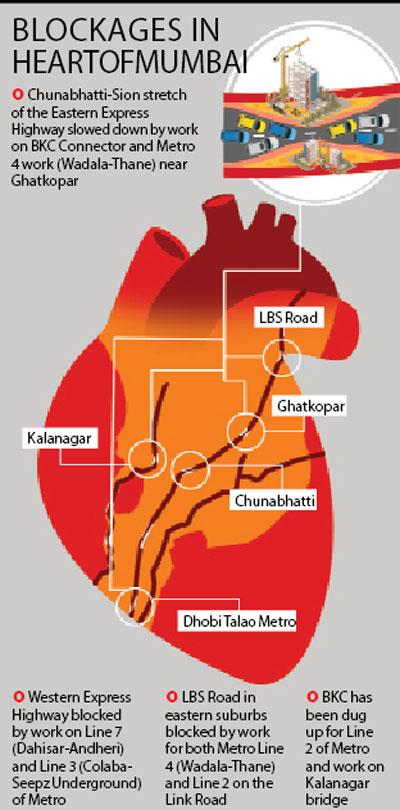
Graphic/Ravi Jadhav
Catch up on all the latest Crime, National, International and Hatke news here. Also download the new mid-day Android and iOS apps to get latest updates
 Subscribe today by clicking the link and stay updated with the latest news!" Click here!
Subscribe today by clicking the link and stay updated with the latest news!" Click here!









